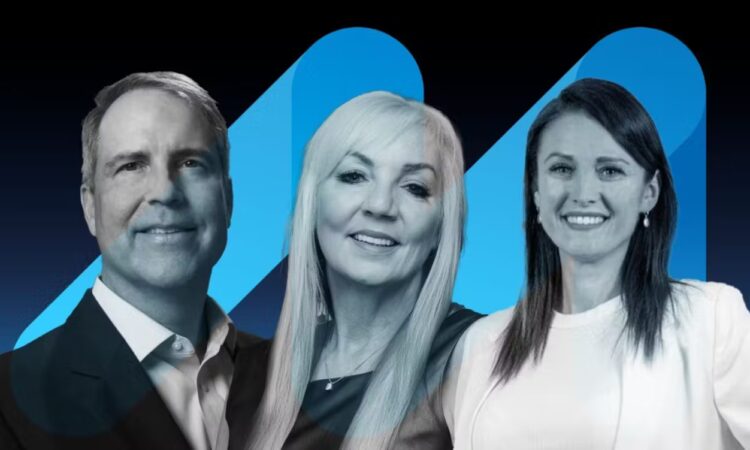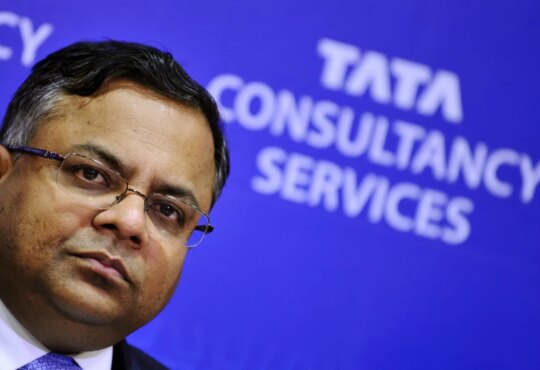
With a management-consulting spine and agency muscle, MarketBridge says it has cracked the code for B2B growth. CEO John Shomaker and European leaders Fiona Shepherd and Fiona McKenzie tell The Drum why they believe a single-firm model – not another roll-up – is the future of marketing’s most complex category.
Everyone in B2B says they “do strategy”. MarketBridge actually starts there. With a management-consulting spine and agency muscle, chief executive John Shomaker and senior European directors Fiona Shepherd and Fiona ‘Fee’ McKenzie are building a rare beast that aims to fix the messy, fragmented go-to-market machine.
For two decades, we’ve pretended the buyer journey is a tidy little waterfall. Spoiler: it’s a whirlpool. Sales split into channels, partners, call centers and web. Marketing splintered into a thousand tactics. The customer seized the steering wheel. Cue potential chaos.
MarketBridge’s answer isn’t another “house of brands” or a shiny slide deck. It’s a one-firm model that blends go-to-market strategy, brand-to-demand execution and – crucially – analytics that decide where the next $1m actually goes. Think management-consultancy rigor, with an agency that can ship the work on Monday.
Want to go deeper? Ask The Drum
“I’ve got 14 reports that all say we’re killing it,” a client told Shomaker. “What I don’t have is a system that tells me what’s truly working.” That insight became the organizing principle for the company. “You know, this is three and a half years in the making at this point,” he continues. “Are we going to build something that looks like every other agency or consultancy… or are we going to build something that actually solves some of that challenge that CMOs face?”
That’s the gap MarketBridge is built to close. At the core sits a team of data scientists doing the unfashionable but essential stuff – multi-touch attribution and decision science – so programs are parts of a machine, not campaigns du jour.
The John Shomaker difference (a CEO suspiciously low in BS)
Shomaker’s route in is key. He’s a go-to-market strategy consultant turned operator, not an adman turned “strategist”. He’s run a programmatic platform, then an earned-media data firm, so paid, owned, earned and sales aren’t abstract to him; they’re moving parts of one engine.
And he’s refreshingly un-grandiose. Ask how you integrate cultures and processes after multiple acquisitions and he doesn’t puff his chest; he admits it’s hard, then talks through the operating model, practice standards and people investment to make it real. In a sector famous for theater, that honesty is oddly radical.
In the UK and Europe, Shepherd and McKenzie are confronting the same disruption. Search volatility, privacy shifts and AI advances are collapsing the old marketing funnel.
“We took a whirlpool, not a waterfall,” says Shepherd. “It’s no longer this kind of linear journey. It’s this self-discovery, customer-led experience that we’re having to deliver against.”
McKenzie adds: “We’ve redefined the buyer journey – the ‘wheel of consideration’. Everything aligns around moments of intent. Those conversations have become therapy sessions, quite frankly. Our clients come to us because we’re a safe space.”
Because the firm is structured as one connected house, brand, demand and channel specialists aren’t “squinting at different dashboards”, as Shepherd puts it; they’re part of the same machine.
Scaling with one name on the door
MarketBridge will reach around 400 staff by the end of October, with about 100 in the UK and 300 across North America, spanning Toronto, Boston and Washington DC. “We have about 120 what you would think of as pretty notable clients today,” says Shomaker, noting that the mix skews mid-market but increasingly penetrates the Fortune 500.
He’s upfront about ambition: “By the end of 26, I’d like to see us north of about $125m.” The firm was also “just included officially in Forrester’s” rankings for go-to-market proposition – a milestone, he admits, that “gets a lot of CMOs asking questions.”
Unlike most agency groups, the company isn’t preserving legacy names. From 2026, all European acquisitions – including April Six and Revere – will trade under a single MarketBridge banner. “Single brand is a big part of our strategy,” says Shepherd. “We’ll have global relationships that buy from one name globally.”
Culture, not spreadsheets, sits at the centre of the integration story. MarketBridge has four distinct practice areas – Consulting, Brand-to-Demand, Analytics and Creative/Content – each with its own career paths and identity.
“We made a decision to maintain four pretty distinct practice areas… we didn’t want to create some homogeneous organization,” says Shomaker. To bring those disciplines together, the company recently launched a year-long next gen leadership cohort for emerging leaders from across practices.
Staff turnover sits around 8%, says Shepherd, a rare figure in the marketing world. Learning and development is treated as infrastructure, not an HR afterthought. “We win if we can hold on to our clients an extra year, and we can hold on to our people an extra year,” Shomaker says. “Those two metrics… and you win.”
What it actually sells
MarketBridge positions itself around what it calls “considered transactions”: the long-cycle, committee-driven decisions typical of B2B, B2B2C and complex consumer categories.
On paper, it’s half consultancy, half agency – “probably 65/35 in the wild,” Shomaker jokes – but the blend is the point. McKenzie says the appeal for Revere, one of the acquired UK firms, was simple: “At Revere, we’d been on a journey toward strategic advisory work for years. MarketBridge already had true go-to-market consulting. That was the differentiator.”
The leadership team candidly admits that the global model is still maturing. Shomaker talks about building vertical overlays to link practices across major accounts, developing global centres of excellence, and entering APAC through partnerships before heavier investment.
Acquisition will continue. “We’ve got two deals coming in to talk to us this week, one out of Germany, one out of the Netherlands,” he says. “A partner in APAC wants to work with us too – I don’t know that I have the stomach for a Singapore flight yet, but partnerships make sense.”
The backers and the buy list
MarketBridge’s private-equity sponsor is RTC Partners, a firm with a reputation for rolling up professional-services groups while investing heavily in human capital. That emphasis, says Shomaker, is unusual – and helpful. “Our investors push us to do more on people, not less,” adds Shepherd.
The acquisitions so far paint a picture of the ecosystem MarketBridge is assembling: Fama PR (Boston); Intelisent (Connecticut); Quarry (St Jacobs, Ontario); CommCreative (Boston); April Six (London and San Francisco); and Revere (London).
Suggested newsletters for you
Most consultancies trying to “get creative” look awkward. Most agencies that bolt on “strategy” end up selling planning with a thesaurus. MarketBridge began on the consulting side and built outward, hiring best-in-class specialists into one integrated structure. With analytics at the core and a cultural operating system that’s more than a poster, it’s making a credible bid to become B2B’s new centre of gravity.
“We’re not out selling soap,” Shomaker says. “We excel where the transactions are considered – longer cycles, more education, multiple channels.”
For CMOs staring down agentic AI, channel entropy and boardroom pressure for growth, this is one chimera worth watching.






